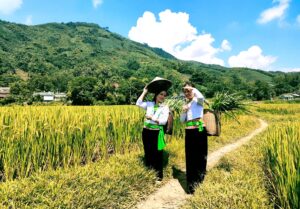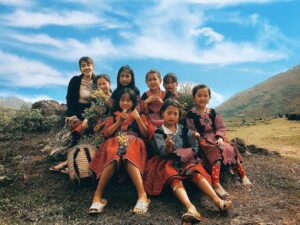Kho-mu People in Vietnam: A Unique Indigenous Ethnic Group
The Kho-mu are one of the oldest ethnic communities living in Dien Bien. They reside in villages and have a rich traditional culture. Although the Kho-mu people are few in number, living scattered across various areas and influenced by the Thai people, their cultural life remains a vast treasure that needs to be preserved and promoted.
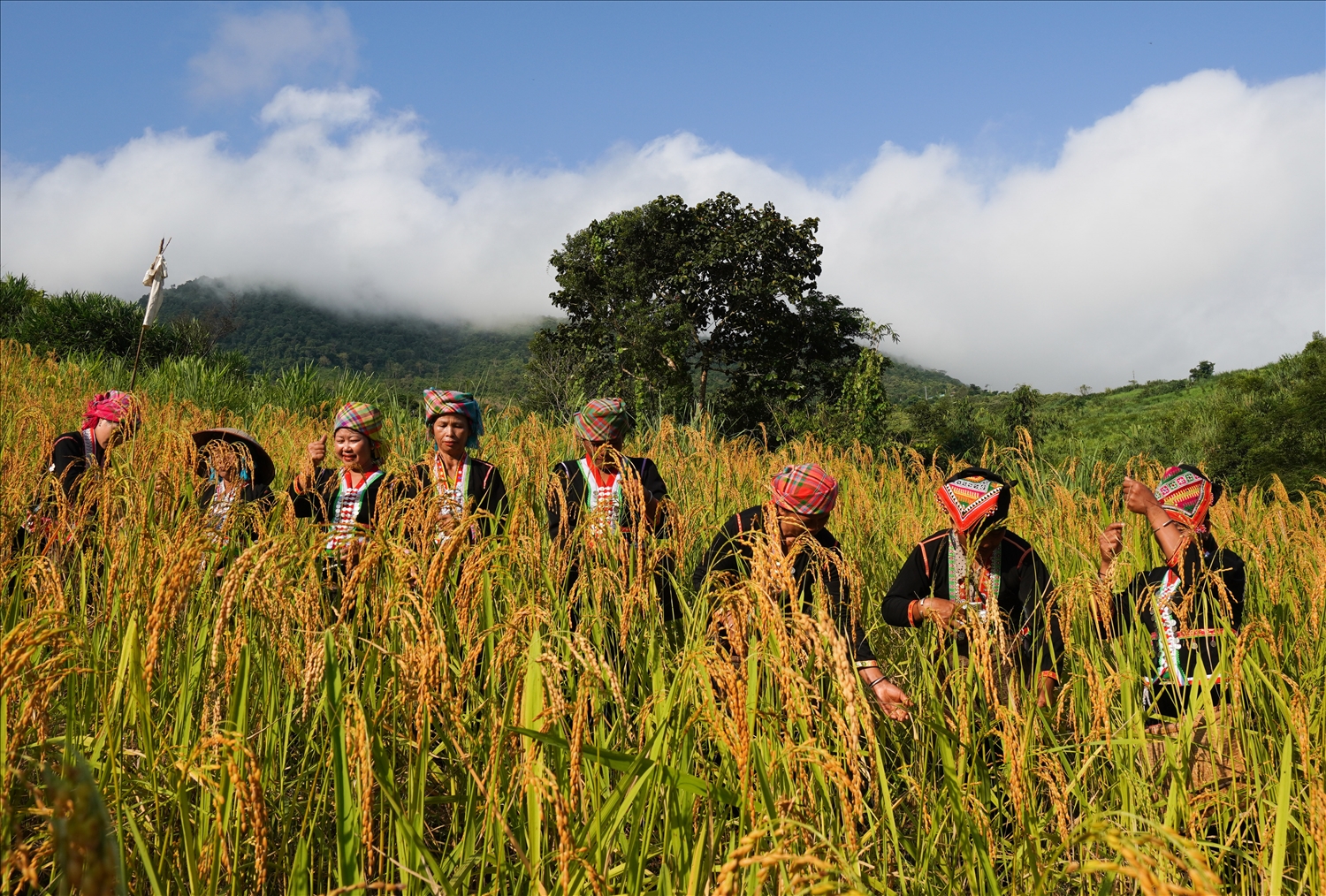
Historical Origins and Migration
The origin of the Kho-mu ethnic group in Vietnam remains a subject of differing opinions. To date, most scientists affirm that the Kho-mu are indigenous people of the Indochinese Peninsula, primarily living in northern Laos, with the most densely populated area being Luang Prabang. They are believed to have formed a kingdom called Swa or Lawa. After the migration of the Lao people, along with military campaigns and the influx of people from Yunnan (China), the Kho-mu were forced to migrate to Thailand and the Northwestern region of Vietnam.
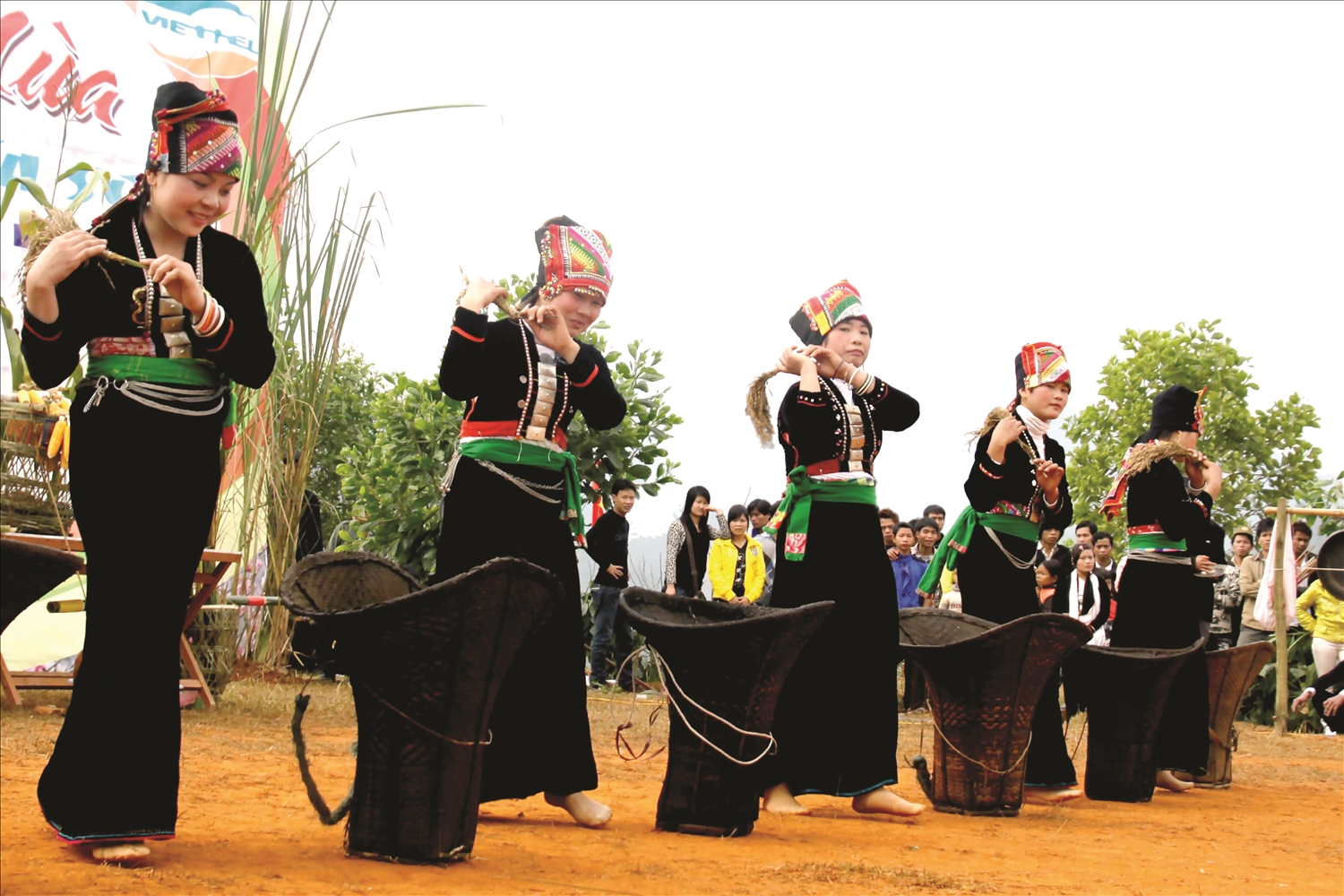
Other opinions suggest that the Kho-mu are indigenous to the Northwest region of Vietnam, based on the folklore shared between the Kho-mu and Thai peoples about the origin of humanity, which is said to have come from a gourd.
Their self-designation: Kmu, Kum Mu, meaning “people” or “community of people.”
Other names: Xa Cau, Kha Klau, Mang Cau, Tay Hay, Mun Xen, Pu Thenh, Tenh.
Distribution and Population in Vietnam
In the province, the Kho-mu people are most densely settled in the districts of Tuan Giao, Dien Bien, Dien Bien Dong, and Muong Cha. The life of the Kho-mu people is closely tied to the forests, mountains, rivers, and streams, reflecting their deep connection to nature.
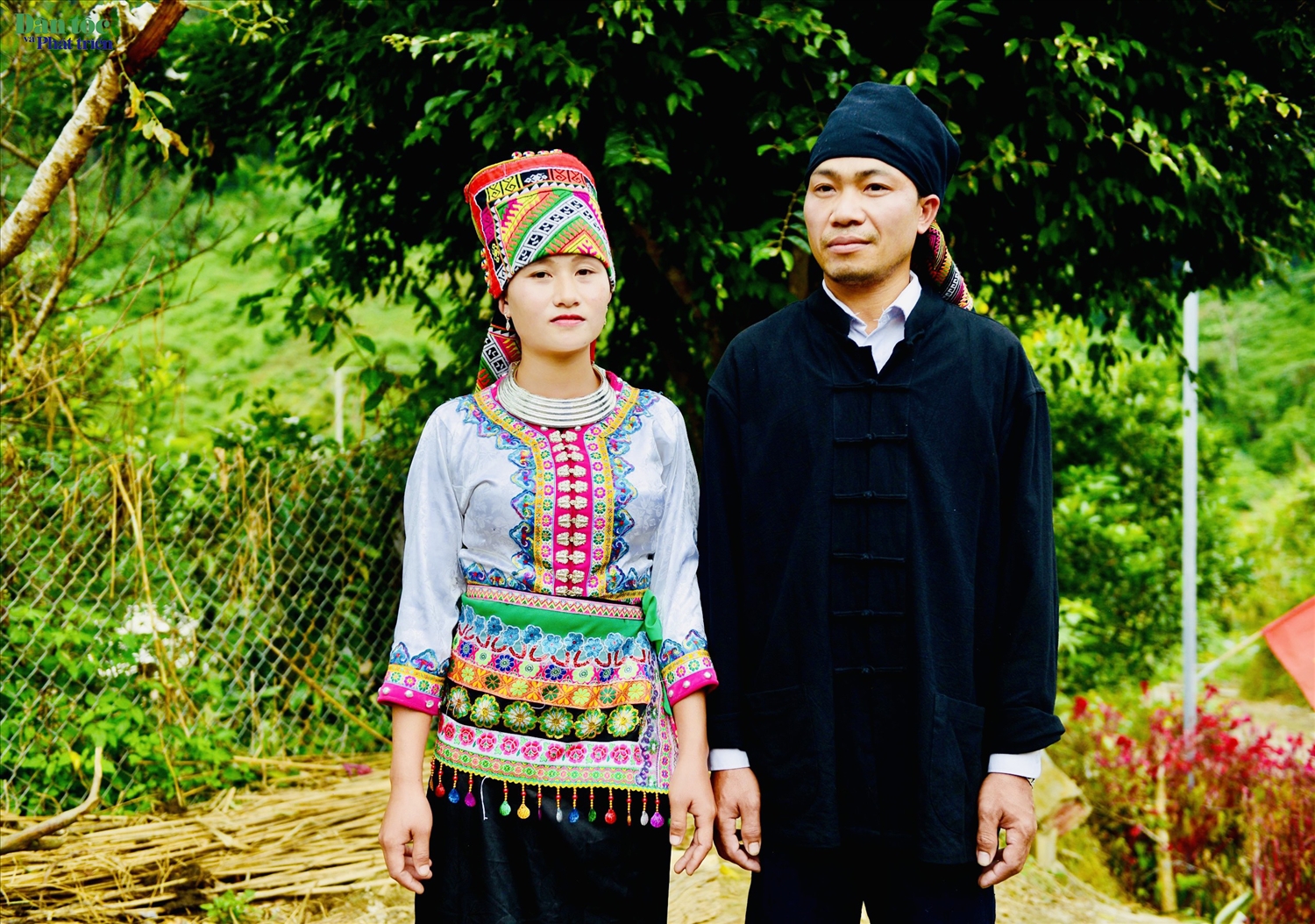
The main livelihood of the Kho-mu people is farming, particularly slash-and-burn agriculture and wet rice cultivation. The villages are often isolated, small, and sparsely populated; the names of their clans are often derived from animals, birds, or forest plants.
Architecture and Living Space
Since ancient times, the Kho-mu people have had the need to build houses that are safe and can withstand the conditions of the high mountains and dense forests. This led to the creation of traditional houses, which have been a vital part of their existence for thousands of years, helping them survive and develop while avoiding dangers from wild animals and harsh natural conditions.
To build a satisfying house, the Kho-mu people select high-quality wood for the frame. In the past, the roofs were thatched, and the smoke from the kitchen over time would enhance the roof’s durability. Nowadays, the roofs are made of metal sheets, tiles, or other roofing materials. The house is not only a place for multiple generations to live together but also a gathering space for extended family and villagers when the family has events. Therefore, the typical size of a house is between 60 to 80 square meters.
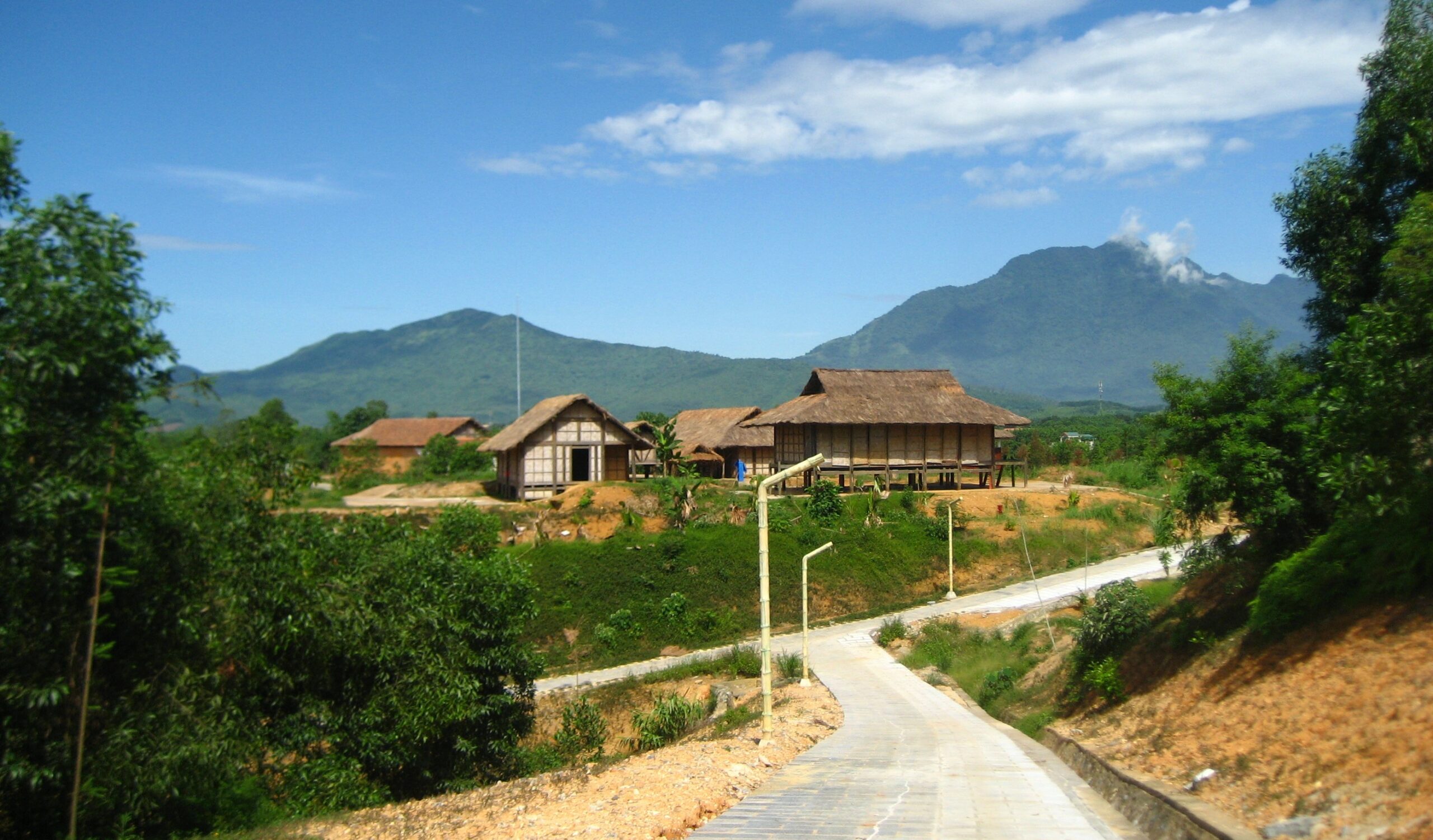
The traditional Kho-mu stilt house has a three-room structure. The kitchen is located at the corner near the front stairs. Another kitchen in the second room is used for ancestral worship and house spirits. The third kitchen, located in the innermost room, is used for steaming sticky rice and brewing alcohol. Guests are not encouraged to approach these two kitchens, as the locals believe it may bring bad luck to the house.
A distinctive feature of the Kho-mu stilt house is that it has only one main entrance and a single staircase. There is a secondary door at the back of the innermost room, which is only opened when the head of the household passes away; otherwise, this area is reserved for worship purposes.
Cultural Characteristics and Unique Customs of the Kho-mu People
The traditional attire of the Kho-mu people is heavily influenced by the clothing of the Thai people. They wear khan pieu (a traditional scarf), black ao com (a type of shirt), and a skirt made from black fabric. The chest area of the ao com features two rows of buttons running down the front, and on either side of the buttons, there are embroidered patterns of the sun, with round and crescent-shaped suns. In the center of the embroidery, silver coins are sewn, symbolizing the desire for prosperity and the warmth and protection of the sun god.
The khan pieu of the Kho-mu is similar to that of the Thai people but with green and red decorative borders on the ends of the scarf. The way the Kho-mu wear the khan pieu is quite different from the Thai people. When wearing the scarf, the Kho-mu create a distinctive style by first tying their hair in a bun at the top of their head and adding extra hair padding for a fuller bun. Then, they wrap the scarf around their head, securing it in place and hiding the end of the scarf under the rim.
For men, their attire consists of shirts and trousers made from indigo-dyed cotton fabric. During festivals, weddings, and special occasions, Kho-mu men wear long black coats and a hat for older men, while younger men wear short jackets with black fabric buttons.
Culture
One distinctive aspect of Kho-mu culture is their dance art, which often uses props made from natural materials like bamboo tubes and rattan. Some of the props used in dance are also considered musical instruments, creating music that guides the dancers to move in specific rhythms and patterns.
The dance movements of the Kho-mu people are highly technical. In addition to simple movements like circle dancing, there are also more complex steps requiring participants to be flexible, adapt to the music, and have a certain fluidity and sensitivity. When dancing, the body moves smoothly and gracefully, with various motions such as rising, descending, bending, swaying sideways, and moving from foot to hand and body.
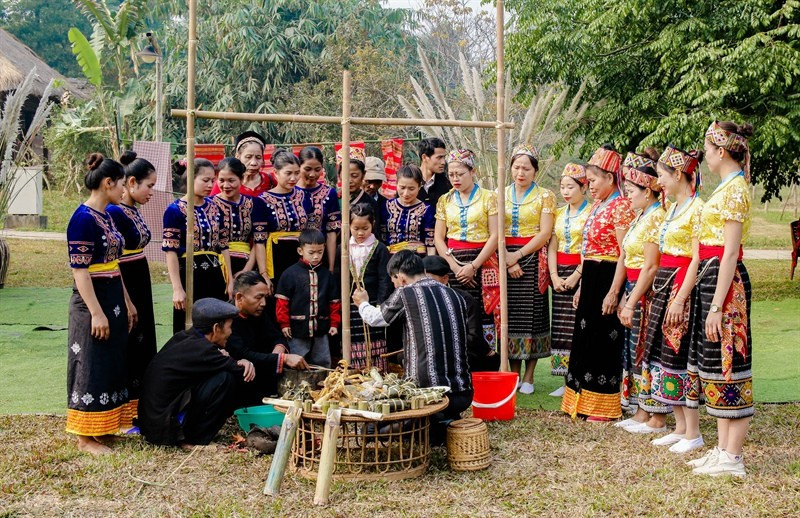
When performing the dances, the entire body of the dancer vibrates, symbolizing vitality and energy. The dancer is immersed in the rhythmic sounds of drums and gongs, elevating the spirit through the movement. The dance art of the Kho-mu people also reflects their communal spirit and unity, as it involves many participants who pass the dance traditions down to younger generations.
Kho-mu dance has become a community tradition and attracts many participants, contributing to the lively atmosphere of festivals, community celebrations, and other social events. It brings joy, hope for prosperity, and fosters a sense of belonging, leaving a unique cultural imprint of the Kho-mu people in the broader ethnic community of Dien Bien province.

